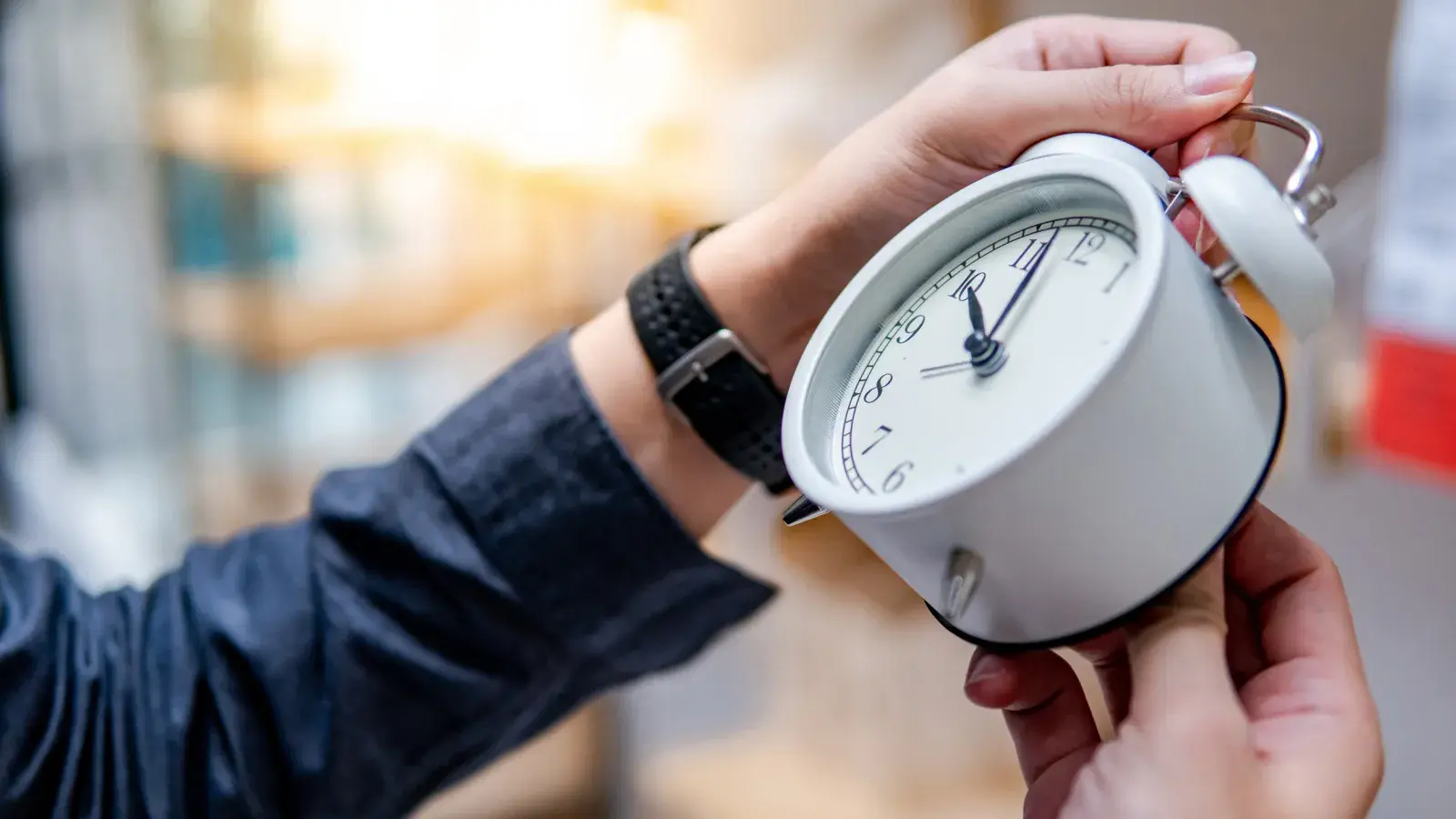By Hannah Millington
Copyright newsweek

Setting the clock forward to daylight saving time in spring and back to standard time in fall could be doing most Americans more harm than good.While the loss of an hour of sleep in March has been linked to more heart attacks and fatal accidents in the days that follow, a Stanford Medicine study has discovered there are longer-term health hazards from the biannual changes—and better alternatives.The team compared how three different time policies—permanent standard time, permanent daylight saving time and biannual shifting—could affect people’s circadian rhythms and their health throughout the U.S.Circadian rhythm is the body’s innate, roughly 24-hour clock, which regulates many physiological processes. The researchers discovered that—from a circadian perspective—we currently have the “worst choice”.Person changing the time on their clock.“While we have know for several years that the biannual shift, especially in the spring, is bad for your health, there is very little data indicating how permanently switching to standard or daylight time would impact health,” study author circadian physiologist Jamie Zeitzer told Newsweek.“Our data demonstrate that from a circadian health perspective, changing to permanent standard time would be better than permanent daylight time, with both being better than the current biannual shift.”The team simulated typical indoor and outdoor light exposure for individuals in every county in the contiguous, continental U.S. states for one year to predict changes in disease prevalence using data from the Centers for Disease Control and Prevention (CDC).By modeling light exposure, circadian impacts and health characteristics county by county, they estimate that permanent standard time would prevent some 300,000 cases of stroke per year and result in 2.6 million fewer people having obesity.Meanwhile, permanent daylight saving time would achieve about two-thirds of the same effect. Under this time policy, the nationwide prevalence of obesity would decrease by 1.7 million people and stroke by 220,000 cases, according to the team.Obesity (which affects more than two in five adult Americans) and stroke (a case of which occurs around once every 40 seconds) are both conditions thought to be influenced by circadian health.“We found that staying in standard time or staying in daylight saving time is definitely better than switching twice a year,” said Zeitzer in a statement.While some agree about wanting to end seasonal time shifts, there is still disagreement over which time policy to adopt.Supporters of permanent daylight saving time argue more evening light could save energy, deter crime and give people more leisure after work, while objectors include parents worried about their children going to school in the dark.Since 2018, a bill proposing permanent daylight saving time has been introduced in Congress nearly every year, though it has never passed.Proponents of permanent standard time, meanwhile, argue that more morning light is optimal for health, which has been endorsed by organizations like the American Academy of Sleep Medicine, the National Sleep Foundation and the American Medical Association.“The problem is that it’s a theory without any data. And finally, we have data,” said Zeitzer.Woman stretching on bed in morning as sun shines through.“When you get light in the morning, it speeds up the circadian cycle. When you get light in the evening, it slows things down. You generally need more morning light and less evening light to keep well synchronized to a 24-hour day,” Zeitzer explained.“The more light exposure you get at the wrong times, the weaker the circadian clock. All of these things that are downstream—for example, your immune system, your energy—don’t match up quite as well.”The researchers used a mathematical model to translate light exposure under each time policy, based on local sunrise and sunset times, to circadian burden—how much a person’s innate clock has to shift to keep up with the 24-hour day.They found that over a year, most people would experience the least circadian burden under permanent standard time, which prioritizes morning light. The benefits vary slightly depending on a person’s location within a time zone and their chronotype—meaning whether they prefer early mornings, late nights or something in between.People who are early birds make up about 15 percent of the population and tend to have circadian cycles shorter than 24 hours, would experience the least circadian burden under permanent daylight saving time as more evening light would extend their circadian cycles closer to 24 hours.To link circadian burden to specific health outcomes, the researchers analyzed the prevalence of arthritis, cancer, chronic obstructive pulmonary disease, coronary heart disease, depression, diabetes, obesity and stroke.Their models suggest permanent stan…



